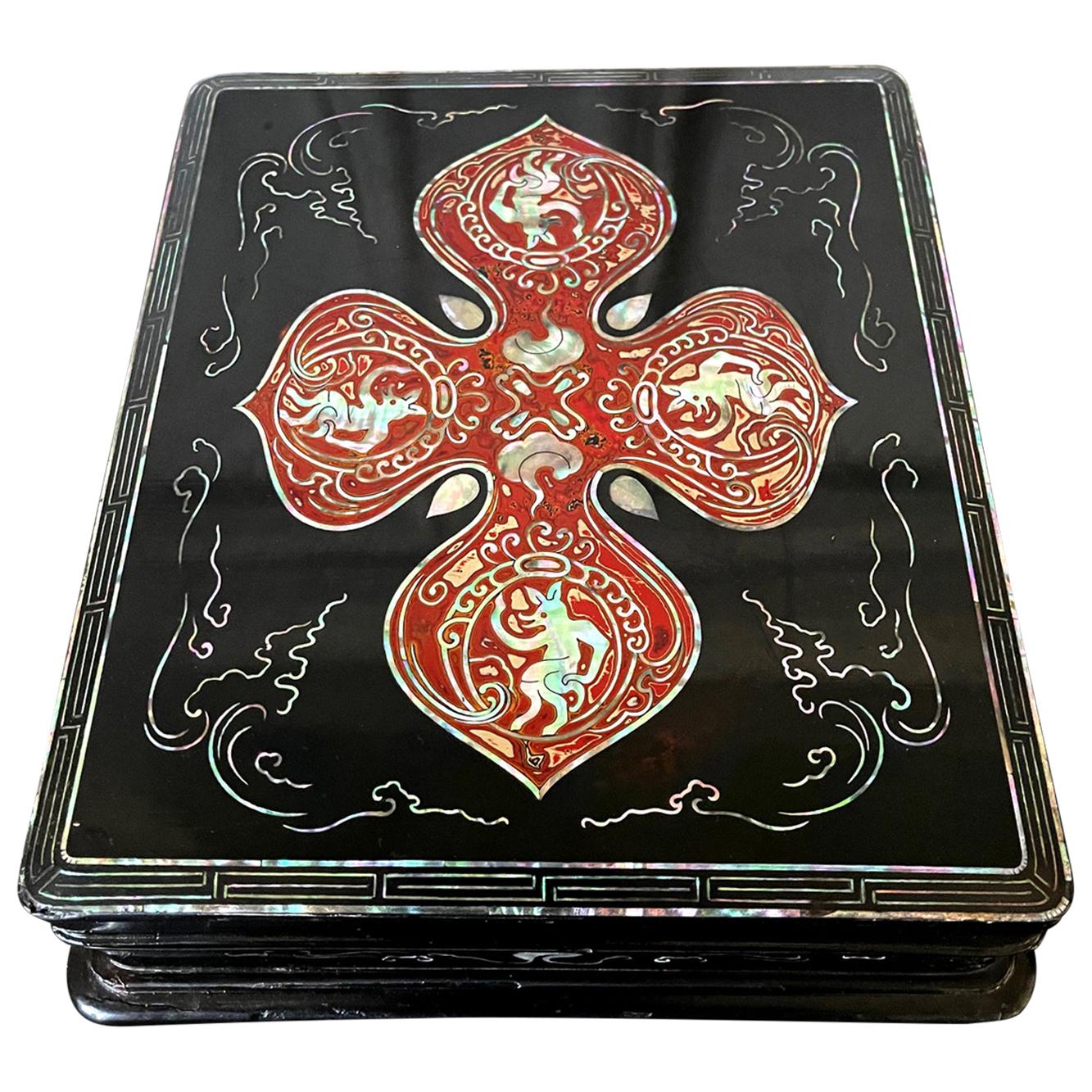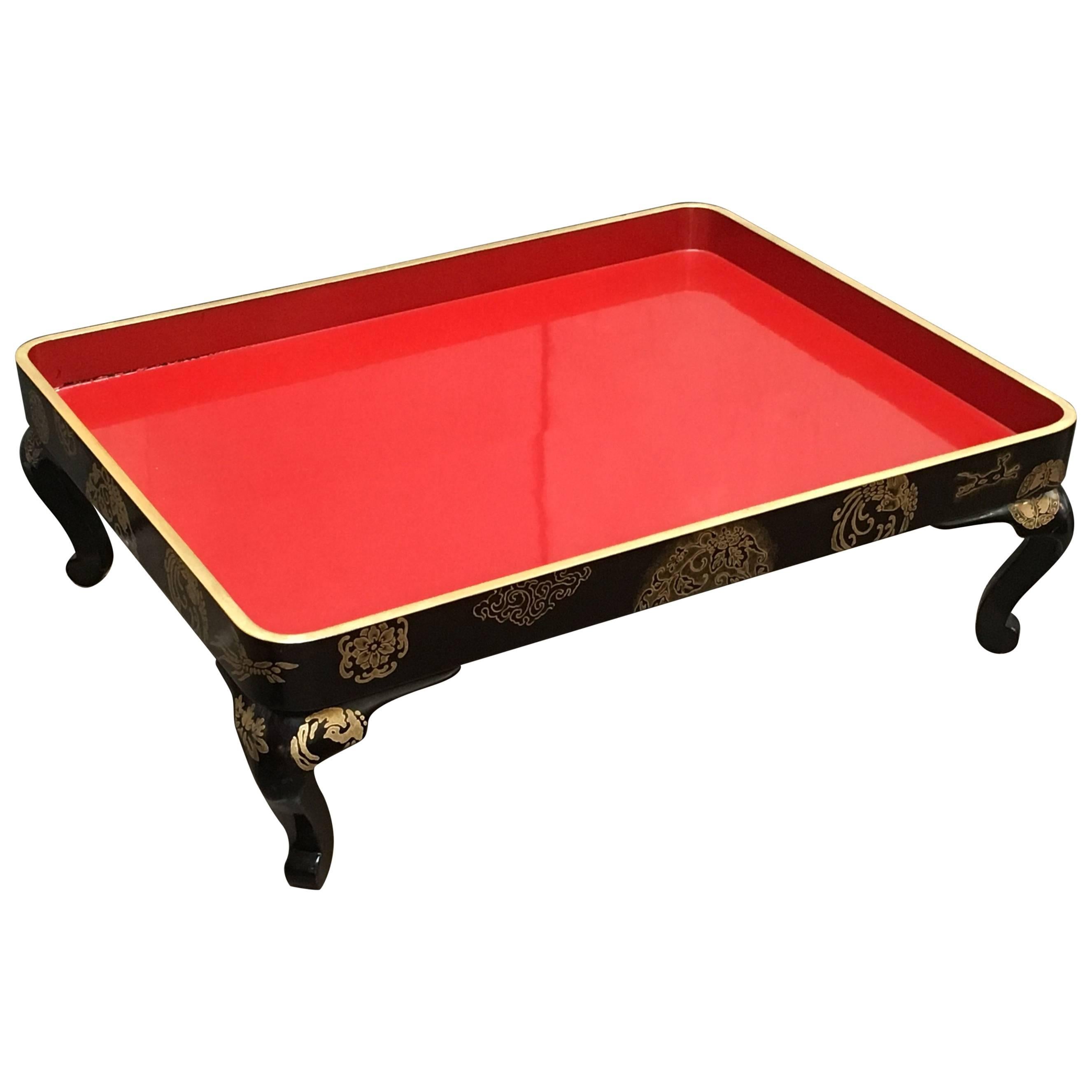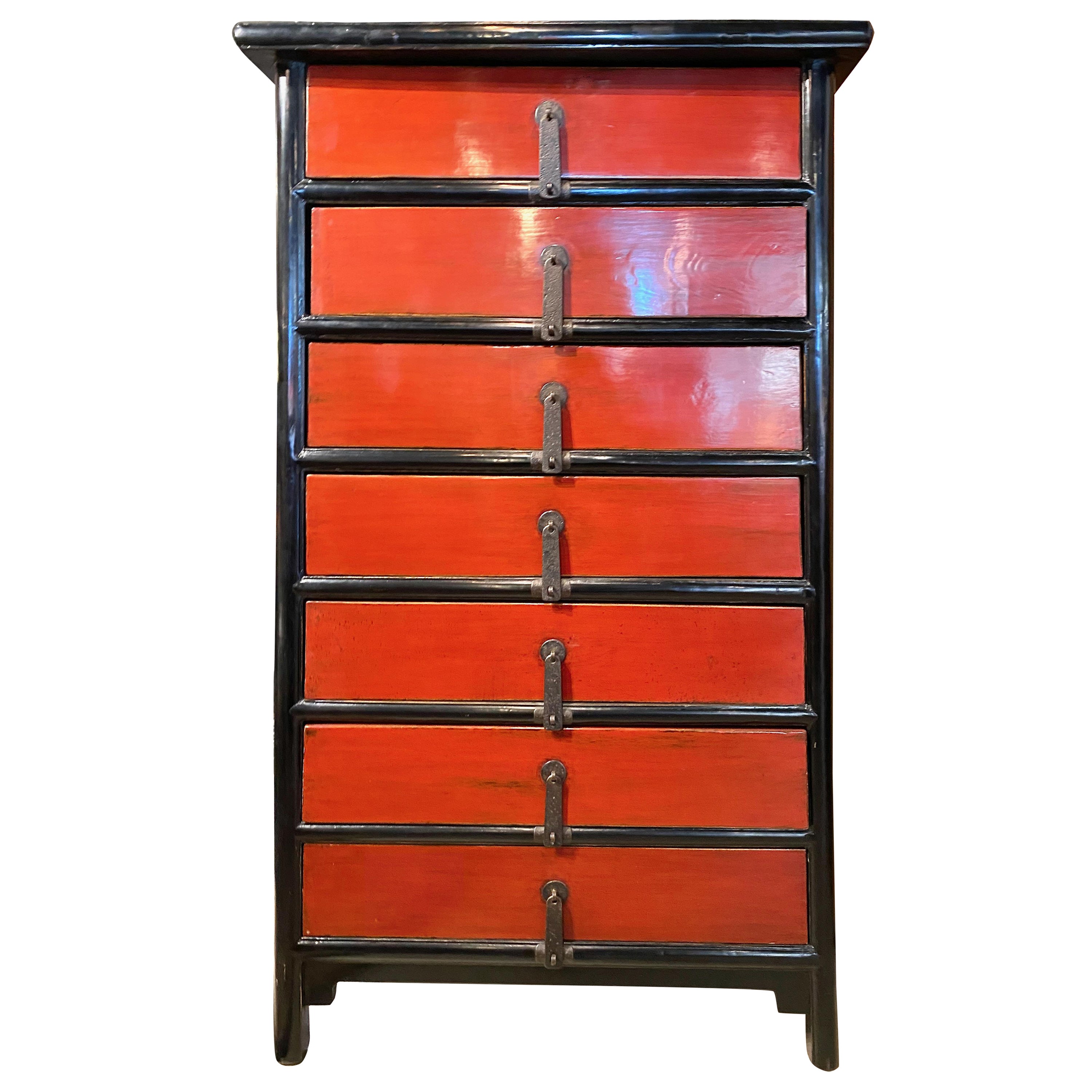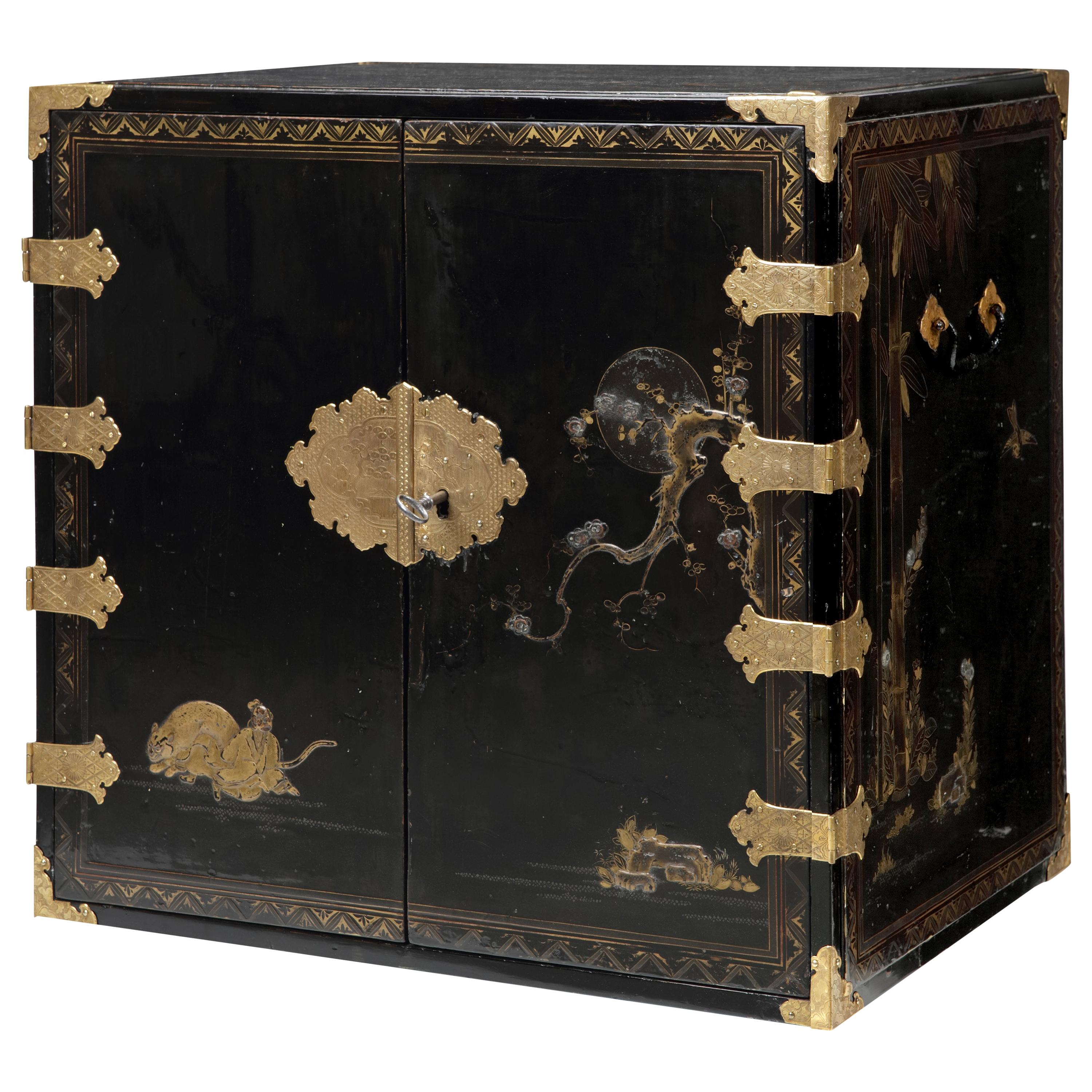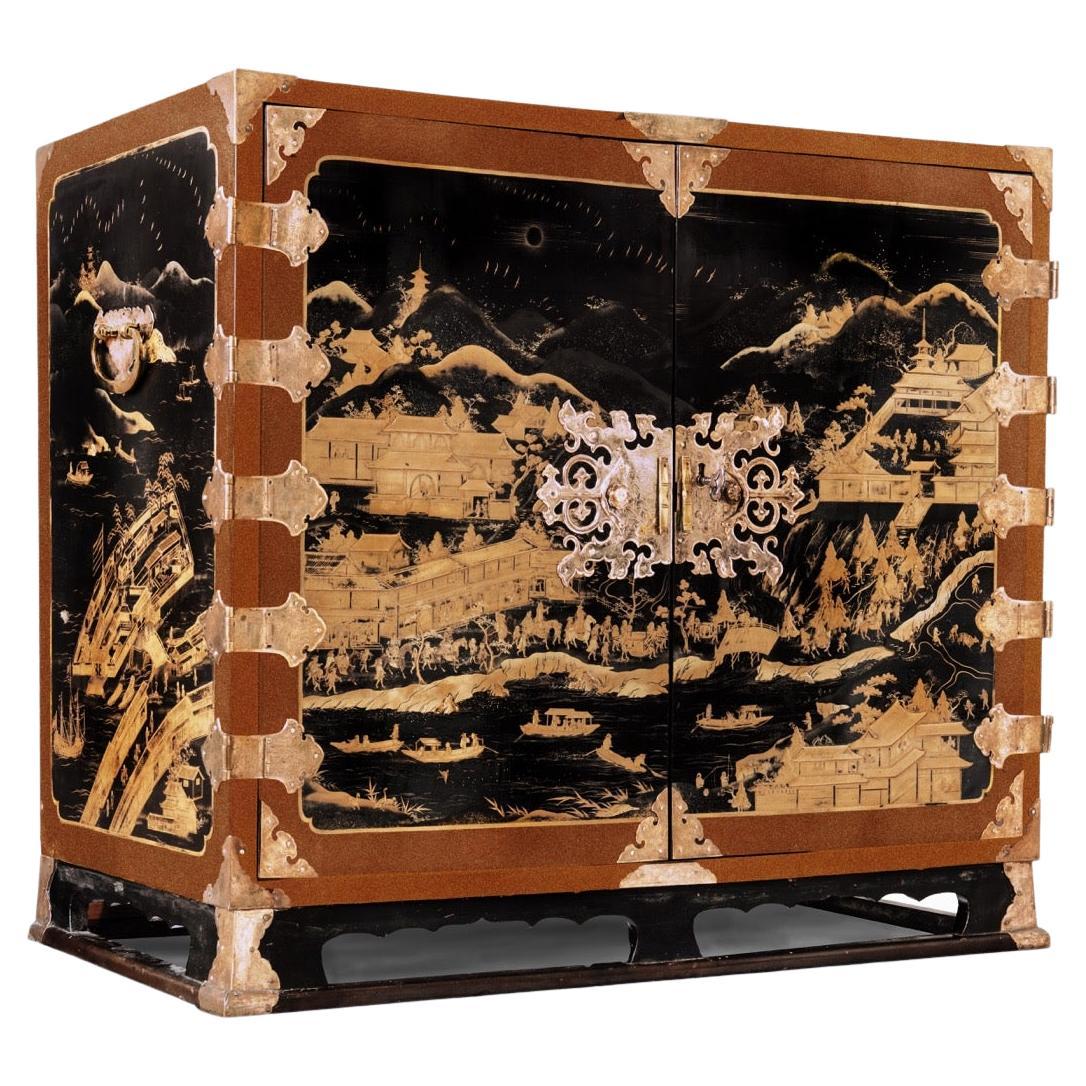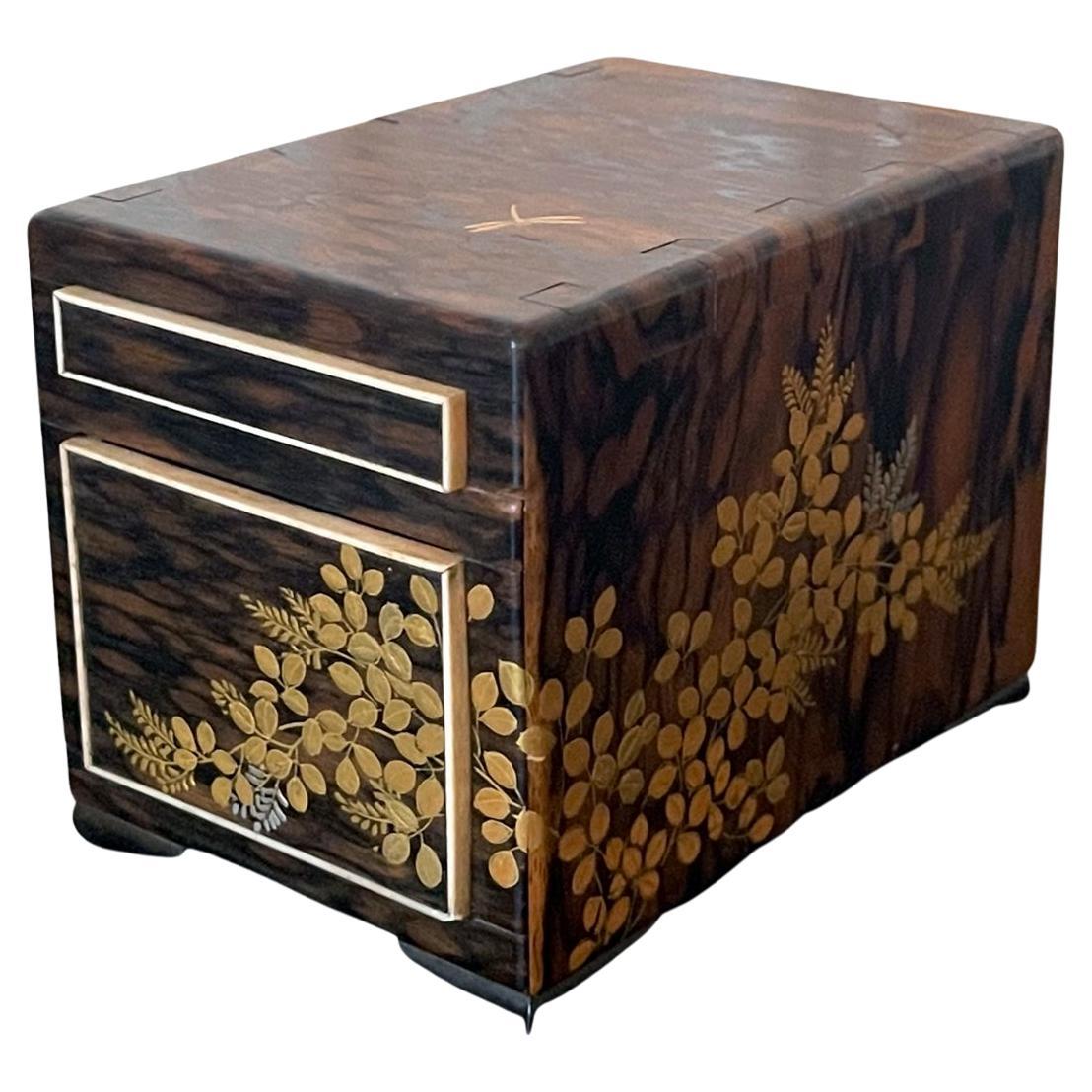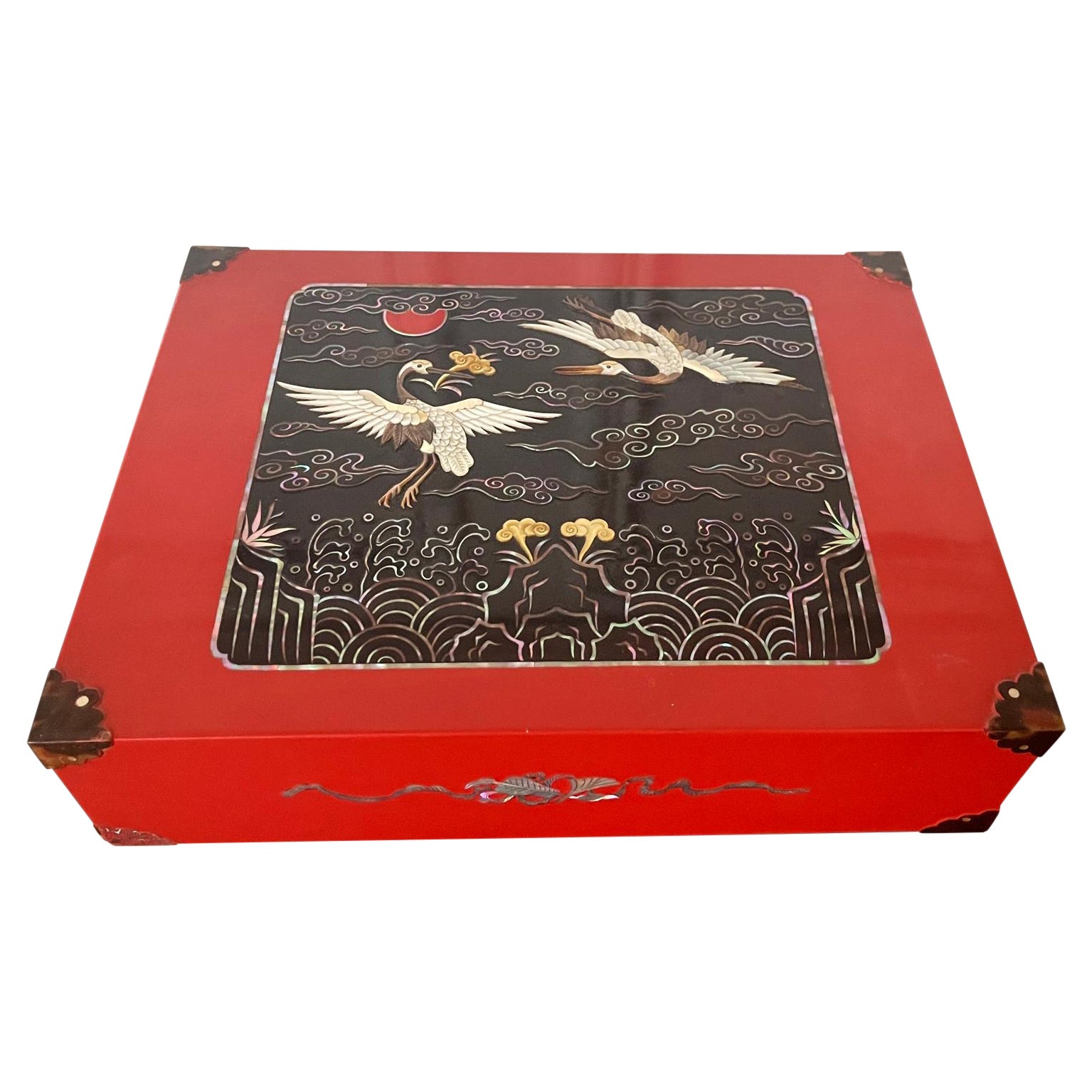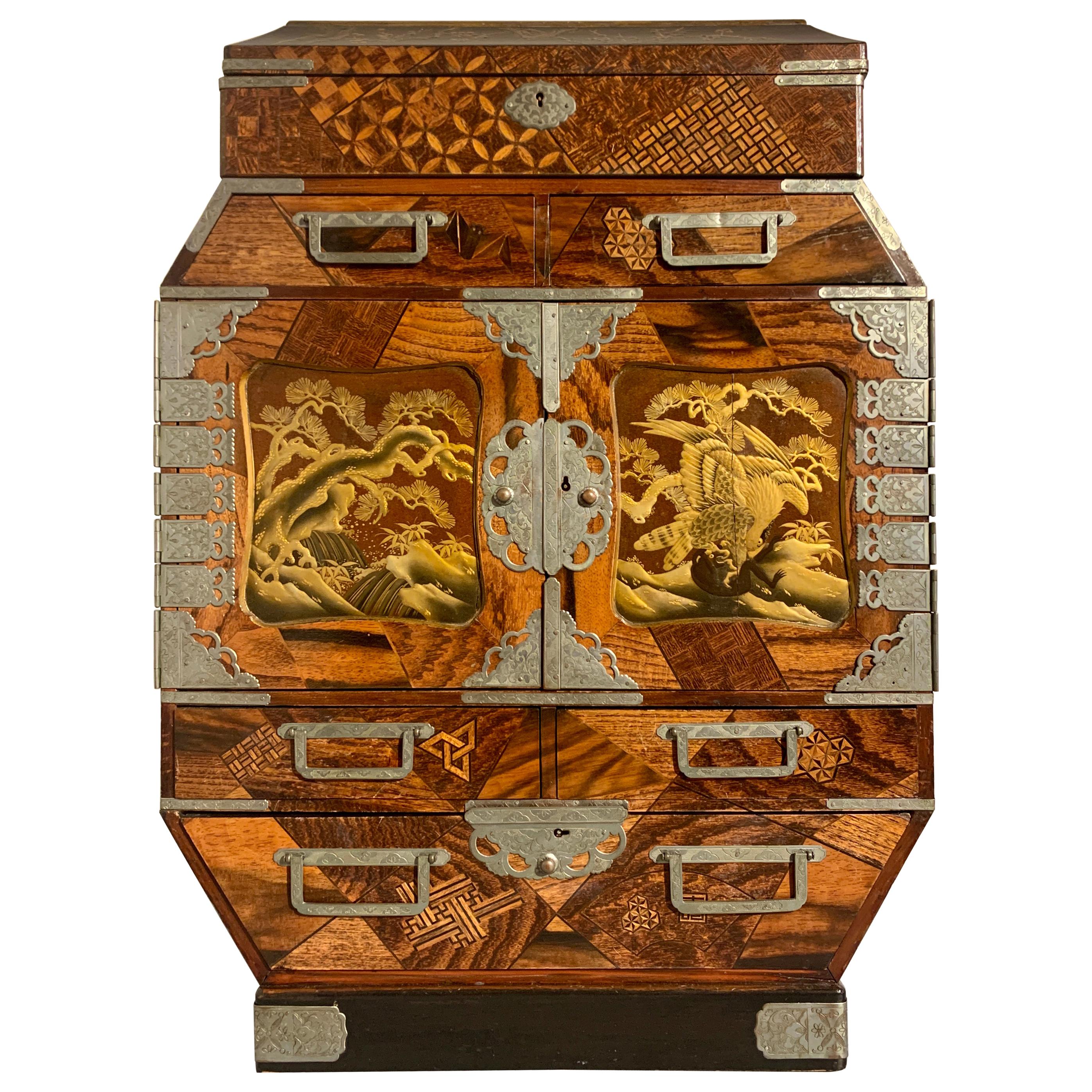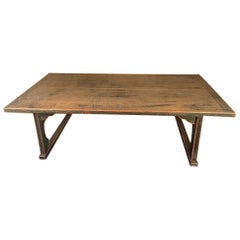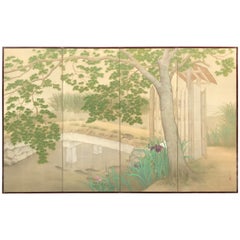
Japan Red Lacquered Tea Container Chaire "Flying Geese" with Mop Inlay
View Similar Items
Want more images or videos?
Request additional images or videos from the seller
1 of 10
Japan Red Lacquered Tea Container Chaire "Flying Geese" with Mop Inlay
About the Item
- Dimensions:Height: 3 in (7.62 cm)Width: 2.75 in (6.99 cm)Depth: 2.75 in (6.99 cm)
- Materials and Techniques:
- Place of Origin:
- Period:
- Date of Manufacture:20th Century
- Condition:Wear consistent with age and use.
- Seller Location:South Burlington, VT
- Reference Number:1stDibs: LU128926218373
About the Seller
5.0
Gold Seller
These expertly vetted sellers are highly rated and consistently exceed customer expectations.
Established in 1990
1stDibs seller since 2015
2,214 sales on 1stDibs
Typical response time: 1 hour
More From This SellerView All
- Japanese Antique Red and Black Lacquered Writing Table, SignedLocated in South Burlington, VTJapan antique handmade, hand carved temple low writing table finished in red and black lacquer - signed. A beautiful simple master work from an old private Japanese collection. Cr...Category
Early 20th Century Japanese Taisho Sculptures and Carvings
MaterialsWood
$850 Sale Price43% Off - Japanese Four Panel Garden Screen with Koi, Iris, & TurtlesLocated in South Burlington, VTUnusual Japanese Four Panel Garden Screen, Mint Condition Japan, a superb four-panel silk screen byobu depicting a panoramic garden replete with koi, turtles, Iris nestled near a walking bridge and wooden roofed shelter. This attractive screen dates to the early Taisho period. It is signed Tae. It is beautifully hand painted with a handsome gold natural light background by a skillful artist painter and is signed with inscription and seal in lower right corner: Dimensions: 69 inches high and 113 inches wide extended. Enticing and rare subject matter, this simple rendition of a serene nature setting and size of painting is skillfully and tastefully rendered in mineral paint pigments on silk and with muted soft green and off-white tones depicting a serene nature walk. Perhaps this is someone's dream tea garden. A red lacquered wood perfectly frames this serene and tasteful composition. Photographed in natural light. Lifetime guarantee of authenticity: All of our Asian works of art come with our Lifetime Authenticity Guarantee. We are members of the North American Japanese Garden...Category
Early 20th Century Japanese Taisho Paintings and Screens
MaterialsSilk
- Japanese Antique Bronze Cats Pair Hand Cast With Playful PoseLocated in South Burlington, VTFrom our recent Japanese Acquisitions trip to Kyoto. A fine pair of antique curious Japanese cast bronze sensuous cats beautifully handcrafted in an attractive and unusual style. Cats were originally domesticated because they hunted mice that would eat stored grains, protecting the food stores. It was a beneficial situation for both species, cats got a reliable source of prey, and humans got effortless pest control. This mutually beneficial arrangement began the relationship between cats and humans which continues to this day. In Japan, there are also cats described as Maneki Neko, also referred to in English as the good fortune or good luck cat...Category
Early 20th Century Japanese Taisho Sculptures and Carvings
MaterialsBronze
- Japanese Big Antique Bronze Temple Bell with Resonating Sound, Signed 21 InchesLocated in South Burlington, VTFor your special garden setting or indoor display space. Big Hand Cast Bronze Bell Bold pleasing, and resonating sound. 21 Inches Tall. Dated Taisho 15= 1926 , December 12 Signed for patron donors at Imari Ikishima Donors include: Fukui Sano and Fukui shie, Tomiyama kazuki,and Nichimao . Handsome original old green patina- just the way we like to find them. Signed by patron donors in two areas. Beautiful deep resonating ring tones await the new owner of this big one-of-a-kind vintage bronze bell from old Japan. Its beautiful natural patina makes it an attractive and desirable work of art. This distinctive dragon headed bell called ryuzu and remarkable protrusions called chi chi or nyu are crafted by generations old skilled Japanese specialists to improve sound resonance and are unique to Japan's ancient traditions. This antique hand cast bronze temple bell dates to the Taisho period, early 20th century. A scarce survivor, this rugged bell was gently used. Please note its impressive cast dragon headed top ryuzu, thick walls and original dark patina. Dimensions: 21 inches tall and 11 inches diameter. It has been used and possesses an original green aged patina appropriate to its age. Its deep resonating sound is guaranteed to please you. About Bonsho Bells "Voice of Buddha" The earliest bells date to around 600 AD, although the general design is of much earlier Chinese origin and shares some of the features seen in ancient Chinese bells. Their penetrating and pervasive tone carries over considerable distances. The sound of the bell is thought to have supernatural properties. It is believed, for example, that it can be heard in the underworld. In Japanese ceremonies, hanging bells are used for signaling during the prayer and for calling Buddhists to worship. In China, similar bells were employed in ensembles, where they represented the yin, or "receptive" principle, and were sounded after the beat of a large drum (yang, or "creative" element). The Japanese bonsho...Category
Early 20th Century Japanese Taisho Sculptures and Carvings
MaterialsBronze
- Japanese Tea Bowl Flying Bats & Good Fortune Hand-Built Hand GlazedLocated in South Burlington, VTMint condition From Japan, a hard to find and unusual hand-built, painted and glazed tea bowl featuring "flying bats" - signs of good fortune, created over thirty years ago. A stunn...Category
Late 20th Century Japanese Showa Ceramics
MaterialsCeramic, Pottery
$44 Sale Price20% Off - Japanese Vintage Tea Ceremony Bronze Tea BellLocated in South Burlington, VTA one-of-a-kind rare tea ceremony accessory discovered from our recent Japanese acquisitions travels. Seldom seen and with lovely sound. This is an extraordinary opportunity to...Category
Early 20th Century Japanese Taisho Sculptures and Carvings
MaterialsBronze
$199 Sale Price66% Off
You May Also Like
- Unusual Japanese Lacquer Inkstone Box with MOP InlaysLocated in Atlanta, GAA Japanese black lacquer box with mother of pearl inlays circa early 20th century, end of Meiji period. It was likely to be used to store inkstone or other scholarly items. The piece displays several interesting characteristics that appear puzzling initially. First, the form is not typical Japanese, but more Chinese and Korean, with its scalloped base. Second, the decoration of MOP inlays also suggests a Korean and Chinese affiliation, especially with the linear borders and the scrolling cloud patters on the sides of the box. These two observations suggest that the box may be from Ryukyu Island instead of Japanese mainland. Third, strikingly in the center of the cover, a bold quarterly floral pattern outlined with MOP was filled with a striking mottled red lacquer using tsugaru nuri...Category
Early 20th Century Japanese Japonisme Lacquer
MaterialsWood, Lacquer
- Japanese Red and Black Lacquer Maki-e Decorated Presentation Tray, dated 1917Located in Austin, TXA fine Japanese red and black maki-e lacquer presentation tray with original tomobako storage box, Taisho period, dated 1917, Japan. The large prese...Category
Vintage 1910s Japanese Taisho Lacquer
MaterialsGold
- Contemporary Japanese Temple-Form Tall Lacquered ChestLocated in Pasadena, CAThis is a beautifully designed and fabricated Japanese pagoda-shaped tall chest of drawers. The chest dates to the late 20th or early 21st century and is in very good to excellent ov...Category
21st Century and Contemporary Japanese Anglo-Japanese Furniture
MaterialsWrought Iron
- Antique Japanese Export Lacquer Bamboo Stick StandLocated in Brea, CAAntique Japanese export lacquer and gilt bamboo stick stand, see more pictures, 46'' x 27.5'' x 10''.Category
Early 20th Century Japanese Meiji Lacquer
MaterialsBamboo
- Rare Charming 17th Century Japanese Lacquer Cabinet with Gilt-Bronze MountsLocated in Amsterdam, NLA fine Japanese pictoral style lacquer cabinet with gilt-metal mounts Kyoto, Edo period, 1670-1690 Decorated in Japanese relief lacquer work, black lacquer ground decorated...Category
Antique Late 17th Century Japanese Furniture
MaterialsBronze
$41,188 Sale Price25% OffFree Shipping - 17th Century Japanese Export Lacquer Cabinet with Depiction the Dutch TradepostLocated in Amsterdam, NLA highly important Japanese export lacquer cabinet with depiction of the Dutch East India Company tradepost Deshima and the annual Dutch delegation on its way to the Shogun in Edo Edo period, circa 1660-1680 H. 88 x W. 100.5 x D. 54 cm This cabinet includes a later European japanned stand, but also a modern powder-coated steel frame. The latter can be designed and added to your specific needs. The sides and front of the rectangular two-door cabinet are embellished in gold and silver hiramaki-e and takamaki-e on a black roiro lacquer ground with a continuous design. The two doors depict a long procession of numerous figures travelling on foot and horseback along buildings and a pagoda into a mountainous landscape. This is the annual court journey, Hofreis, of the Dutch from Nagasaki to the Shogun’s court in Edo. Three horseback riders are dressed as Dutch merchants and a fourth figure, probably het Opperhoofd, is seen inside a palanquin, norimon. Just about to cross the bridge, two men are carrying a cabinet like the present one. Many Japanese figures on either side of the procession are engaged in various activities; some play musical instruments on board of small boats, others are fishing; figures inside buildings are depicted playing go, and farmers are tending to their rice paddocks. The upper part of the right door shows a large mansion, probably the local daimyo’s castle, with men kneeling before a man in the central courtyard. The court journey fits in with the foreign policy of the shogunate which accorded a role to the VOC alongside China, Korea, and the Ryukyu Islands who also had to pay tribute. However, the VOC employees were traders, having low status in Japan’s social hierarchy, and they were received with less deference than were the state embassies from Korea and the Ryukyu Islands. Nevertheless, the contacts with the Dutch were a welcome source of information to the Shogun about Europe and European science and technology. The left side of the cabinet depicts, in mirror image, a rare view of the artificial fan-shaped Deshima Island, the trading post for the Dutch in Japan. The island, where the Dutch flag flies, is surrounded by small Japanese boats and an anchored three-masted fluyt (cargo ship), flying Dutch flags, with on the stern the VOC monogram. On the bottom right a busy street of Nagasaki is shown, bordered by shops and leading up to the stone bridge. On the island the trees are beautifully painted, two cows can be seen, and the flagpole, all in very fine detail. Dutchmen and enslaved Malay are visible outside the buildings and two Japanese figures, probably guards, sit in a small hut in the centre. A maximum of fifteen to twenty Dutchmen lived on the island at any time and soldiers or women were not allowed. Restrictions on Deshima were tight, and the merchants were only allowed to leave the island by special permission. The Opperhoofd had to be replaced every year, and each new Opperhoofd had to make a court journey to pay tribute, present gifts, and to obtain permission to Margaret Barclay eep on trading. In the distance, many birds fly above the hills and a four-story pagoda can be seen. The right side of the cabinet is painted with other horse riders and their retinue journeying through mountains. The pair of doors to the front open to reveal ten rectangular drawers. The drawers are decorated with scenes of birds in flight and landscapes with trees and plants. The reverse of the left door with two thatched buildings, one with a ladder, underneath a camelia tree with large blooms; the right door with a three-story pagoda nestled among trees and both doors with a flying phoenix, ho-oo bird. The cabinet, with elaborately engraved gilt copper mounts, hinges, lock plates and brass handles, is raised on an 18th-century English japanned wood stand. A pair of large cabinets...Category
Antique 17th Century Japanese Edo Lacquer
MaterialsCopper, Gold
$1,372,960Free Shipping
